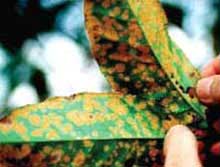What is the growing environment of coffee beans? What conditions must be met to grow coffee beans?
Coffee is native to tropical Africa. The origin of the small seed species is the tropical plateau of Ethiopia. It is between 900 and 1800 meters above sea level with an average annual temperature of 19. C; the mid-grain species is native to the tropical rain forest of the Congo, with an average annual temperature of 2126 at an altitude of less than 900 meters. C . Their origins are shaded or semi-shaded forests and river valleys, so the formation of coffee requires calm, cool and humid environmental conditions.
1. Temperature
Different varieties of coffee have different requirements for temperature. Small seeds need a cooler climate, with an annual average temperature of 19-21. Between C. The monthly average temperature dropped to 12.7. At C, the plant grew slowly and the daily absolute lowest temperature was 4.5. C lasted for an hour, and the newly drawn terminal buds and young leaves were damaged. One. One. At C, frost was formed on the long surface of leaves, and water-stained patches appeared on the back of leaves after the temperature rose, which could be recovered by light victims, but in severe cases, a large number of leaves fell and branches withered, and affected the normal differentiation and development of flower buds, resulting in a sharp decrease in yield. Medium-grain coffee needs a higher temperature, and the annual average temperature should be 23-25. Between C. The most suitable night temperature for flower bud development is 20: 21. C, the most suitable temperature for flowering is 17: 20. C, less than 10. At C, it is not conducive to flowering and pollination, such as the temperature drops to 2. C, the leaves show the phenomenon of cold injury.
2. Rainfall
The rainfall in the world's coffee producing areas is generally between 1000 and 1800mm, some as low as 760mm and some as high as 2500 mm (see table 7). The annual rainfall is more than 1250 mm and is evenly distributed, which is most suitable for the growth and development of coffee. If the dry season is too long, the growth will be inhibited, which is not conducive to the development of flower buds, abnormal flowers will increase, and the fertility rate will decrease. If there are too many Rain Water, it is easy to cause the branches to grow and the blossom and fruit to decrease. The annual rainfall of Lujiang Farm in Yunnan Province is only 700 mm, and the drought period is as long as 8 months, but the coffee still grows well under the condition of irrigation.
3. Lighting
The world is a semi-shaded crop, in full light, the growth of coffee is inhibited, if the lack of water and fertilizer, there will be premature senility and death. If the shade is too large, the vegetative growth of the plant will be too prosperous, the branches and leaves will grow, and the blossom and fruit will be reduced. The light requirement of coffee varies with variety, development period, soil fertility and water condition. Large-grain species are the most resistant to light, while small-grain species are more light-tolerant than medium-grain species. Under the condition of fertile soil and irrigation, shade may be reduced or not needed; on the contrary, if coffee is grown in areas with thin, high temperature and drought soil, shade should be increased appropriately. Generally, the suitable shade degree is about 60% to 70% in seedling stage, 40% to 50% after planting, and 20% to 40% in peak period.
4. Wind
Coffee needs calm wind environment, typhoon and dry wind are disadvantageous to the growth of coffee. When the typhoon reaches level 10 or above, a large number of leaves and fruits will blow off, and some trunk branches will be blown off; after the typhoon, the bark at the junction of the coffee root neck will be worn, causing germs to invade, resulting in a large number of deaths after the wind. Dry wind is extremely disadvantageous to the flowering of coffee.
5. Soil
Coffee has a well-developed root system and grows particularly well in fertile and loose forest soil. Fertile sandy loam or red loam is suitable for growing coffee, while clay with good drainage is disadvantageous to the growth of coffee root system. When the PH value in the soil is lower than 4.5, the root system is underdeveloped.
Note: "small seed", "medium seed" and "large seed" are the terms for Arabica coffee, Robusta coffee and Liberika coffee in China. This title may not be scientific. Yunnan coffee is mostly "catamole" and a small amount of "Kupika" under the Arabica line, while there are many subspecies, mutants and hybrids under the Arabica line.
(source: Funong net)
Important Notice :
前街咖啡 FrontStreet Coffee has moved to new addredd:
FrontStreet Coffee Address: 315,Donghua East Road,GuangZhou
Tel:020 38364473
- Prev

The sugar commonly used in drinking coffee is analyzed in detail about the differences of various sugars.
The sugar commonly used in drinking coffee details the subtle differences in the taste of various sugars and different sugars added to the coffee. The following editor will introduce separately: White sugar (sucrose) white granulated sugar is the most common sugar used in drinking coffee in China at present, because of its sweetness all the time, there are fewer miscellaneous flavors and impurities, so the sugar packets in coffee shops are generally white granulated sugar. Yellow sugar is actually a kind of brown sugar.
- Next

Coffee Rust Disease or Coffee Roya
The shift from traditional shade to sun cultivation may have been the main cause of the large coffee leaf rust outbreaks on coffee farms in Central America and Mexico. Coffee leaf rust was discovered in Central America 40 years ago, but recent outbreaks in Central America (Colombia, Costa Rica, El Salvador, Guatemala, Nicaragua) and Mexico are by far the most serious and dangerous
Related
- What is the meaning of lactic acid fermentation with coffee bean treatment?
- How to judge the state of foam by sound?
- How does the latte pull out the unicorn pattern? Come to get for a little trick to improve the flower pull!
- Will flower pulling affect the taste of the latte?
- Do you know the history of coffee?
- The difference between honey treatment and sun washing what is raisin honey treatment?
- What kind of milk can a novice use to make coffee foam to keep the foam longer? The correct method and skills of milking tutorial sharing
- Why do washed coffee beans taste sour? Flavor characteristics of washed Coffee
- Introduction to the skill of how to practice the size and height of water injection around the circle of hand-brewed coffee
- How do beginners practice coffee flower drawing from scratch?

